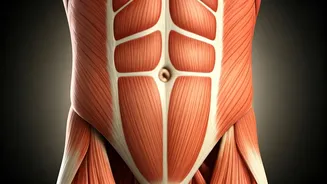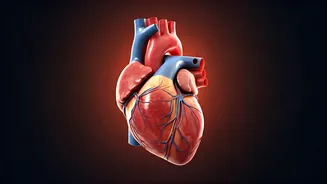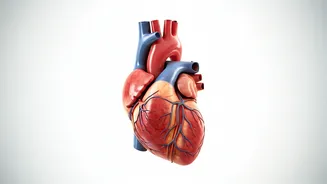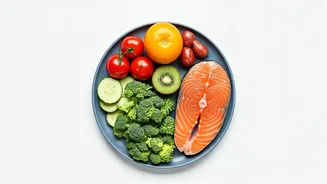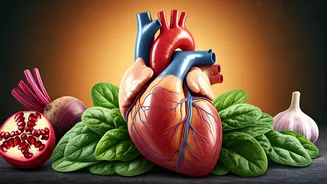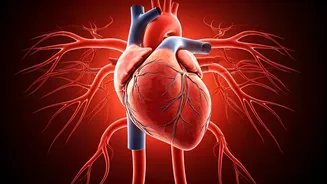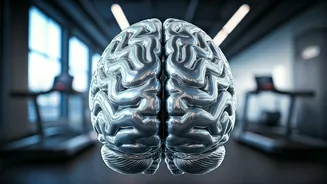Spot Reduction Myth
The notion of spot reduction, the belief that you can target fat loss in a specific area by exercising that area, is a widespread misconception. This idea
often leads individuals to focus solely on exercises like crunches, believing they will directly burn belly fat. Unfortunately, the human body doesn’t work this way. When you engage in physical activity, your body taps into its overall fat stores for energy. The fat loss occurs throughout the body, not just in the area being exercised. For instance, while crunches can strengthen abdominal muscles, they do not directly burn the fat layer covering those muscles. The body decides where to draw energy from based on various factors, including genetics, hormones, and overall calorie balance. Therefore, to effectively reduce belly fat, a comprehensive approach is required, focusing on overall fat loss rather than localized exercise efforts.
The Body's Fat Burning
Fat loss is a systemic process, meaning it affects the entire body rather than isolated regions. When you create a calorie deficit, the body begins to utilize stored fat for energy. This stored fat is mobilized and then transported throughout the body to be used as fuel. This process doesn't differentiate between belly fat, thigh fat, or arm fat. The location from which the body draws fat is determined by factors like genetics, hormones, and individual body composition. Engaging in exercises such as running, swimming, or weight training contributes to an overall calorie burn. When combined with a reduced calorie intake, these activities stimulate fat loss throughout the body. Spot reduction would imply that a person could solely do crunches and eliminate belly fat without changing their overall diet or engaging in other forms of exercise. The reality is far more complex; a holistic strategy is key.
Importance Of Calorie Deficit
The most important factor in fat loss is creating a calorie deficit. This means consuming fewer calories than your body uses. Regardless of the exercises you perform, if you consume more calories than you burn, you will not lose fat, regardless of whether you are doing crunches. Diet and nutrition play a massive role in fat loss. Focusing on a balanced diet rich in whole foods, such as fruits, vegetables, lean proteins, and whole grains, is crucial. These nutrient-dense foods help you feel fuller, provide essential nutrients, and support overall health. Reducing processed foods, sugary drinks, and excessive fats will help reduce calorie intake. Tracking your calorie intake can provide a clear picture of what you are consuming, allowing you to make informed decisions about your diet. This awareness helps ensure you create and maintain a necessary calorie deficit.
Effective Exercise Strategies
While crunches alone won't reduce belly fat, exercise is still critical for overall health and body composition. A combination of cardiovascular exercises and strength training is the most effective approach. Cardiovascular exercises like running, swimming, cycling, and brisk walking burn calories and promote overall fat loss. Aim for at least 150 minutes of moderate-intensity or 75 minutes of vigorous-intensity aerobic activity per week, as per global guidelines. Strength training, such as weightlifting or bodyweight exercises, builds muscle mass. Increasing muscle mass boosts your metabolism, leading to more calories burned at rest. Incorporate strength training sessions two to three times per week, focusing on compound exercises that work multiple muscle groups simultaneously, such as squats, deadlifts, push-ups, and rows. Combining these two elements provides a well-rounded exercise plan.
Holistic Lifestyle Changes
Achieving your fitness goals involves more than just diet and exercise. Adequate sleep, stress management, and hydration play significant roles in fat loss. Getting enough sleep (typically 7-9 hours per night) helps regulate hormones that impact appetite, metabolism, and fat storage. Chronic sleep deprivation can increase cortisol levels, a stress hormone that promotes fat storage, especially around the abdomen. Managing stress through techniques such as meditation, yoga, or spending time in nature can help reduce cortisol levels. High stress levels can lead to overeating and hinder fat loss efforts. Staying hydrated is also crucial; drinking enough water supports metabolic processes, helps you feel fuller, and improves overall health. Aim for at least eight glasses of water per day. These lifestyle adjustments contribute to the overall effectiveness of your fat loss strategy, maximizing your results and improving your overall well-being.
